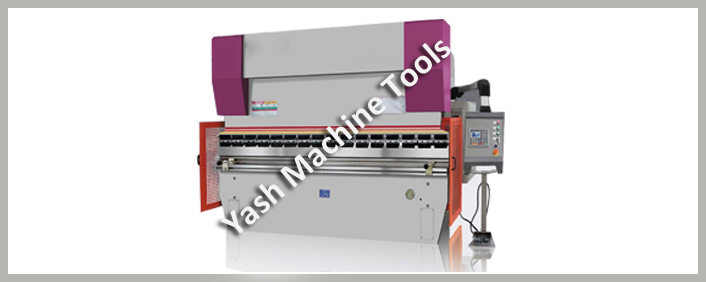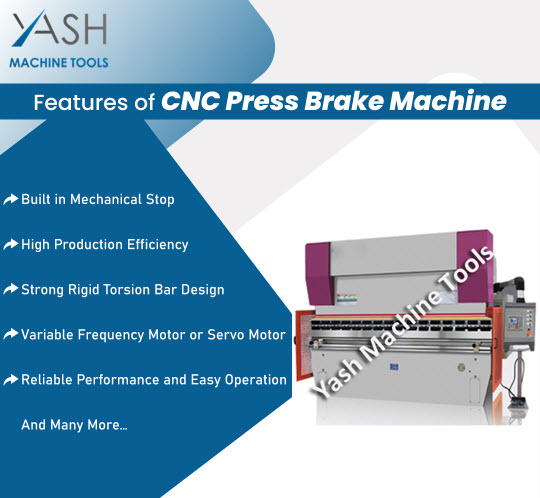In the vast landscape of industrial machinery, the mechanical press brake stands out as an essential tool, shaping and bending metal with precision and efficiency. Let's explore the fascinating world of mechanical press brakes, delving into their history, key components, operational mechanisms, applications, benefits, challenges, and future prospects.
### Definition of a Mechanical Press Brake
A **mechanical press brake** is a specialized machine designed to bend sheet metal and plate materials. It uses mechanical force to achieve precise bends, making it a cornerstone in various manufacturing processes.
### The Importance of Mechanical Press Brakes in Manufacturing
The industrial sector relies heavily on mechanical press brakes for metal fabrication, providing a cost-effective and efficient solution for bending operations. These machines are indispensable in sectors ranging from automotive to aerospace, where precision and reliability are paramount.
### Evolution of Mechanical Press Brake Technology
#### Historical Background
The origin of mechanical press brakes dates back to the early 20th century, evolving from manual operations to powered machines. This historical journey reflects the relentless pursuit of improved efficiency and accuracy.
#### Technological Advancements
Modern mechanical press brakes have undergone significant technological upgrades, incorporating digital control systems, automated features, and enhanced precision. These advancements have made them more versatile and user-friendly than ever before.
### Components of a Mechanical Press Brake
#### A. Frame and Bed
The sturdy frame and bed provide stability and support during the bending process, ensuring consistent and accurate results.
#### B. Ram and Punch
The ram and punch work together to apply force to the metal, shaping it according to the desired specifications.
#### C. Back Gauge
The back gauge helps position the material accurately, contributing to the precision of each bend.
#### D. Control Systems
Digital control systems have transformed mechanical press brakes, enabling programmable and repeatable bending sequences.

### Working Mechanism
#### A. Bending Process
The bending process involves the controlled application of force, gradually shaping the material to achieve the desired bend angle.
#### B. Types of Bends
Mechanical press brakes offer versatility in producing various bend types, including V-bends, U-bends, and more complex forms.
#### C. Precision and Accuracy
The design of mechanical press brakes ensures high precision, meeting tight tolerances in industrial applications.
### Applications Across Industries
#### A. Metal Fabrication
In metal fabrication, mechanical press brakes play a crucial role in creating components for diverse industries, such as construction and consumer goods.
#### B. Automotive Sector
Automotive manufacturers rely on mechanical press brakes to shape automotive components with precision, enhancing vehicle safety and efficiency.
#### C. Aerospace Industry
The aerospace industry depends on mechanical press brakes for their precision and reliability, adhering to stringent standards.
### Advantages of Mechanical Press Brakes
#### A. Cost-Effectiveness
Compared to hydraulic counterparts, mechanical press brakes offer cost-effective solutions for smaller to medium-sized operations.
#### B. Versatility
Their versatility makes mechanical press brakes suitable for a wide range of applications, catering to diverse manufacturing needs.
#### C. Efficiency and Speed
With faster cycling times, these brakes contribute to increased productivity and efficiency on the factory floor.

### Challenges and Solutions
#### A. Maintenance Issues
Regular maintenance is critical to address wear and tear, ensuring the longevity and optimal performance of mechanical press brakes.
#### B. Safety Concerns
Operators must follow strict safety protocols, including proper training and the use of safety features, to minimize risks.
#### C. Technological Solutions
Advancements in technology have introduced safety features and automated systems, addressing challenges and enhancing overall machine performance.
### Choosing the Right Mechanical Press Brake
#### A. Considerations for Selection
Factors like material type, thickness, and production volume are vital in selecting the appropriate mechanical press brake for specific industrial needs.
#### B. Customization Options
Manufacturers offer customization options to tailor mechanical press brakes to unique requirements, ensuring optimal performance across diverse applications.
### Future Trends in Mechanical Press Brake Technology
#### A. Automation and Robotics
The integration of automation and robotics is set to revolutionize mechanical press brakes, streamlining processes and reducing manual intervention.
#### B. Integration with IoT
The Internet of Things (IoT) is expected to connect and optimize mechanical press brakes, enhancing real-time monitoring and predictive maintenance.
### Environmental Impact
#### A. Energy Efficiency
Mechanical press brakes contribute to energy conservation and sustainable manufacturing practices through efficient power utilization.
#### B. Sustainable Practices
Adopting sustainable practices, manufacturers find mechanical press brakes as allies in reducing the environmental footprint of industrial processes.
### Conclusion
The overview of mechanical press brakes highlights their central role in industrial settings, blending efficiency, versatility, and precision. As technology continues to advance, the future of mechanical press brakes holds the promise of even greater efficiency, automation, and sustainability in manufacturing.
By embracing innovation and adhering to best practices, the mechanical press brake remains a cornerstone of modern manufacturing, driving progress and efficiency across industries worldwide.
C24 Anti-shock Solid Carbide Shank Finishing Boring Head
boring bar milling,boring bars and boring heads,boring bars for boring head,boring head bt40,boring head cutters,boring head for sale
SICHUAN JOJO TOOLS CO., LTD , https://www.jojo-tools.com
